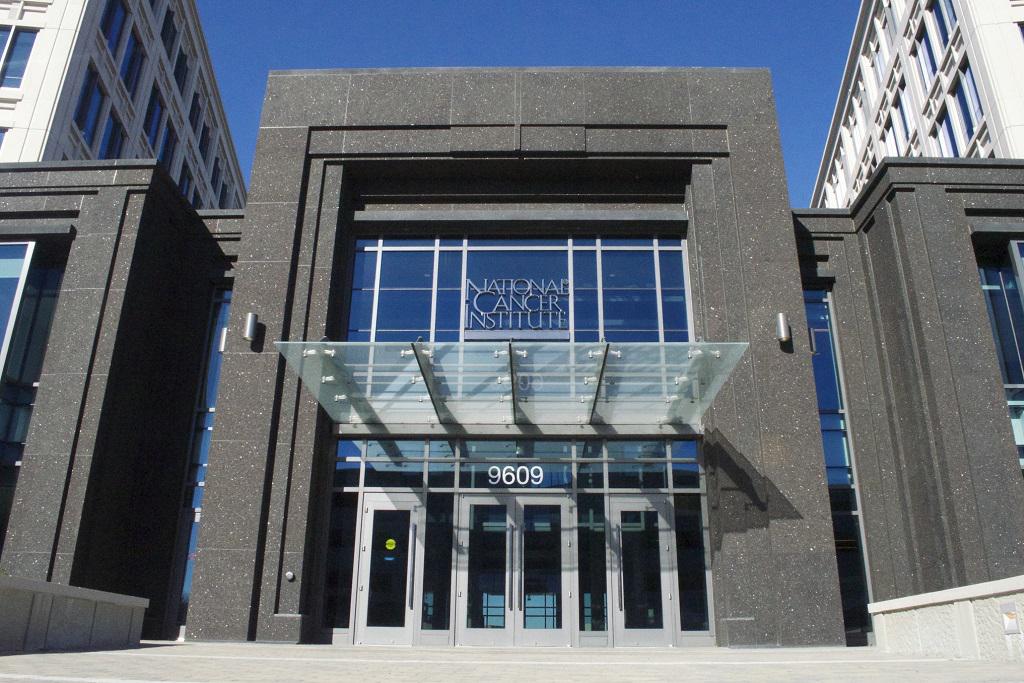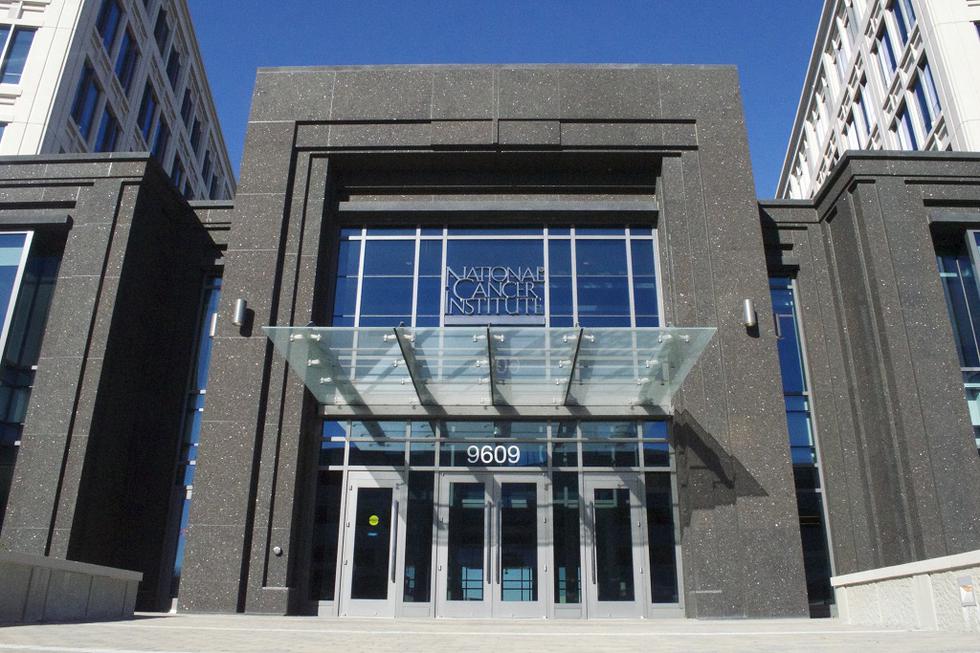
The NIH’s ‘How to Become a Billionaire’ Program
An obscure company affiliated with a former NIH employee is offered the exclusive license for a government-funded cancer drug.
The NIH’s ‘How to Become a Billionaire’ Program
An obscure company affiliated with a former NIH employee is offered the exclusive license for a government-funded cancer drug.BY DAVID DAYEN
OCTOBER 18, 2023
Expand

NATIONAL CANCER INSTITUTE/NIH
The nominee for NIH director, Monica Bertagnolli, serves currently as the director of the National Cancer Institute, where the former employee worked.
As the Senate holds confirmation hearings today for a new director of the National Institutes of Health (NIH), the agency quietly filed a proposal last month to grant an exclusive patent for a cancer drug, potentially worth hundreds of millions or even billions of dollars, to an obscure company staffed by one of its former employees.
Exclusive patents are typically given to companies so they can raise investment capital for the long process of bringing a drug to market. But in this case, the NIH invented and manufactured the treatment in question, and is sponsoring the clinical trials. An exclusive patent transfers all the benefit of a drug discovery from the government to an individual company. In this case, the ultimate beneficiary would be a former researcher who worked on the technology while in the government.
“I’m sure this is a fine fellow, but why give former employee a monopoly?” said James Love of Knowledge Ecology International, which tracks drug patent issues. “He’s going to have generational wealth if it succeeds. At no risk to him, because the trial is funded.”
More from David Dayen
The nominee for NIH director, Monica Bertagnolli, serves currently as the director of the National Cancer Institute, where the former employee worked. The Senate Health, Education, Labor and Pensions (HELP) Committee, which will hold the confirmation hearing, has information regarding the exclusive patent grant, and it may be part of the questioning.
The NIH has previously resisted using its full set of tools under the Bayh-Dole Act of 1980 to lower the cost of prescription drugs by seizing patents for unaffordable treatments. This latest situation offers one potential reason why: Patents can be exceptionally lucrative for former and even current NIH employees.
THE PROPOSED RECIPIENT OF THIS EXCLUSIVE PATENT, a Kingston, New Jersey–based company called Scarlet TCR, was incorporated in Delaware in February. It has no website or filings with the Securities and Exchange Commission. “These companies are often like ghosts, they’re nothing,” Love said.
After doing some digging, Love traced Scarlet TCR to a former senior investigator and research scholar for immunology with the National Cancer Institute (a division of the NIH) named Christian Hinrichs, who now works at the Rutgers Cancer Institute of New Jersey. The Rutgers campus in New Brunswick is about 12 miles from Kingston, New Jersey, and the mascot of the university is the Scarlet Knight, which could explain Scarlet TCR. Hinrichs also disclosed a financial relationship with Scarlet TCR at a recent American Association for Cancer Research meeting.
The extent of that relationship is unknown. While Love presumes that Hinrichs is either the creator of Scarlet TCR or one of its principal executives, the NIH would not confirm Hinrichs’s role to Love, and offered essentially no information about the company. The Prospect attempted to contact the NIH about Scarlet TCR and Hinrichs as well, and did not receive a response. Hinrichs also did not respond to a request for comment.
Hinrichs also disclosed financial relationships with several other drug companies, including PACT Pharma, Cargo Therapeutics, GlaxoSmithKline, Neogene Therapeutics, and Capstan Therapeutics.
Scarlet TCR’s proposed patent would be for a T cell receptor (hence TCR) gene therapy for a cancer known as the human papillomavirus (HPV), which often appears as cervical cancer. The cell therapy essentially trains cells to attack cancer in the body. It showed promise in a Phase I clinical trial with published results in 2021. Hinrichs is listed as one of the researchers in the study, in a position that usually denotes the supervisor. In published interviews, Hinrichs has said that “cell therapy is a particularly potent way to target cancers,” and that “we have recent discoveries from the laboratory that are showing promise.”
The acknowledgments to the paper confirm that the NIH Intramural Research Program funded the trial. Gilead Sciences, the large drug company, also collaborated with the NIH on the research. Yet its name is not on the patent license, while the mysterious Scarlet TCR is.
Scarlet TCR would obtain the exclusive right to develop and market the drug, even though the NIH developed, tested, and produced it using public resources.
A Phase II trial due to be completed in 2025 already has a large enrollment of 180 subjects. Other similar TCR therapies were approved by the Food and Drug Administration with smaller enrollments in their clinical trials.
This particular license is likely to be extremely valuable, because if successful, this cell therapy would be one of the only TCR treatments for solid tumors rather than cancers found in the blood. “Solid tumors is the holy grail in this market,” Love said. “The most common forms of cancer are breast, lung, prostate, and colon cancer. They’re all solid tumors.”
If it received the license, Scarlet TCR would obtain the exclusive right to develop and market the drug, even though the NIH developed, tested, and produced it using public resources. Love explained that patents like this usually get sold for potentially billions of dollars, first to venture capitalists and eventually a bigger drug company that can actually manufacture the drug. Love has called it “a how-to-become-a-billionaire program run by the NIH.”
The new patent holder, piggybacking off of government-funded research and development, would have monopoly rights for several years, during which it could charge whatever it wanted. Because the drug intends to treat a disease with few patients, it could also qualify for “orphan drug” tax credits and exclusivities that would be even more lucrative.
The new drug price negotiations through Medicare are only operative once the drug is actively in circulation for up to 11 years. Furthermore, treatments for diseases like cervical cancer, which traditionally affect younger people, wouldn’t be a likely candidate for Medicare price negotiation.
THE NIH LICENSING PROPOSAL appeared in the Federal Register on September 21, pooling together 32 different domestic and foreign patent applications. The Bayh-Dole Act authorizes the NIH to grant exclusive licenses, but according to the statute, only when exclusivity is “reasonably necessary to provide the incentive for bringing the invention to practical application.”
Once the proposal is published in the Federal Register, the public has only 15 days to comment or object, down from 60 days in previous years. Because the NIH eliminated the ability for advocacy groups to file an administrative appeal for any patent license—only a competing company can do so—this narrow 15-day window is the only opportunity to object.
KEI filed its opposition on October 6, arguing that Scarlet TCR doesn’t need any incentive to develop a drug that’s already in NIH-funded trials. “There is no case to argue that the NIH needs to grant worldwide life-of-patent exclusive licenses to get this treatment onto the market,” the formal opposition letter states.
Instead, KEI proposes, the NIH could apply for FDA approval itself, and license the drug to multiple different drug companies on nonexclusive licenses. This would “ensure that the technology is available and affordable,” according to the opposition letter. It would also create a precedent, which could get drugs to market for a fraction of the price of a monopoly patented medication.
Cancer drugs are already known to be exorbitantly expensive, and a drug with an exclusive license is likely to follow that trend. The NIH did not answer a question about whether it takes into account affordability and access when making licensing decisions.
“While making former NCI employees extremely wealthy, even billionaires, may seem like a good cause at the NIH, it imposes huge fiscal costs on the rest of us,” KEI writes.
The office of Sen. Bernie Sanders (I-VT), who chairs the Senate HELP Committee, did not respond when asked if the Scarlet TCR license would be an issue in congressional hearings. As the National Cancer Institute director, Bertagnolli ran the agency where Hinrichs developed the treatment.
Love wants to know how much a monopoly license will cost patients, and why the NIH didn’t just wait until the results of the Phase II trial to decide on exclusivity. He hopes that senators will ask Bertagnolli if she will explore a nonexclusive patent strategy.
If senators don’t bring up the Scarlet TCR case, it will be harder for the public to stop the granting of a license. “It’s a gold-mine drug,” said Love. “Once you create a monopoly, it’s really hard to claw it back.”

